Nature does have its uncanny ways of molding coastlines into fantastic formations,
almost too fabulous to be true. From towering sea stacks and secret caves to the
dramatic arches and colorful cliffs, these geological wonders turn an ordinary beach
into an out-of-this-world setting.
While some of these formations took millions of years to create, others continue to
evolve through the persistent work of waves, wind, and weather. These fifteen
destinations show some of the most spectacular examples of nature’s artistic talents
along the world’s shores.
Giant’s Causeway, Northern Ireland
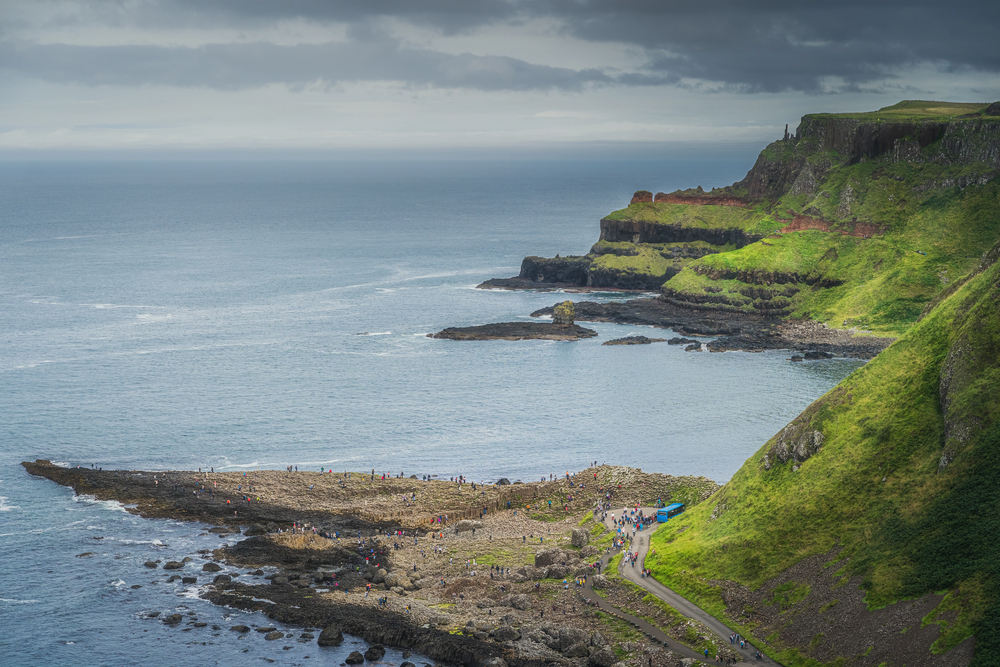
This UNESCO World Heritage site features more than 40,000 interlocking basalt
columns that give the impression of being a giant geometric pathway into the sea.
These thousands of hexagonal pillars created by ancient volcanic activity rise as
high as 39 feet high and plunge beneath the waves, resembling a staircase for
giants.
This incredible landform has been passed into local folklore, with the fabled
giant Finn MacCool supposedly building the causeway across to reach his rival in
Scotland. A nearby visitor center furnishes great insight both from the geological and
mythological perspectives regarding this unique landform.
The Twelve Apostles, Australia
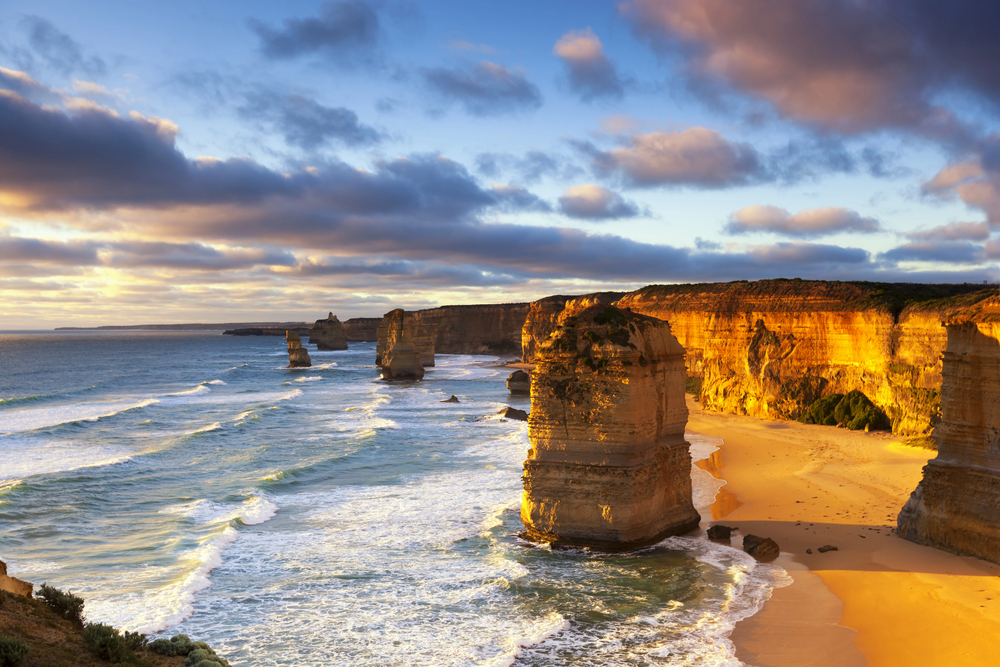
The towers of limestone rise dramatically from the Southern Ocean along Victoria’s
Great Ocean Road, standing guard against the waves that relentlessly attack them.
Most of the original twelve stacks remain standing after erosion over the years, but
these columns still create one of the world’s most photographed coastal scenery.
Golden-hued rocks change color throughout the day and are most spectacular at
sunset when they glow against the darkening sky. Helicopter tours give breathtaking
aerial views, and the clifftop walking trail offers great vantage points for photography.
Like Travel Pug’s content? Follow us on MSN.
Legzira Beach, Morocco
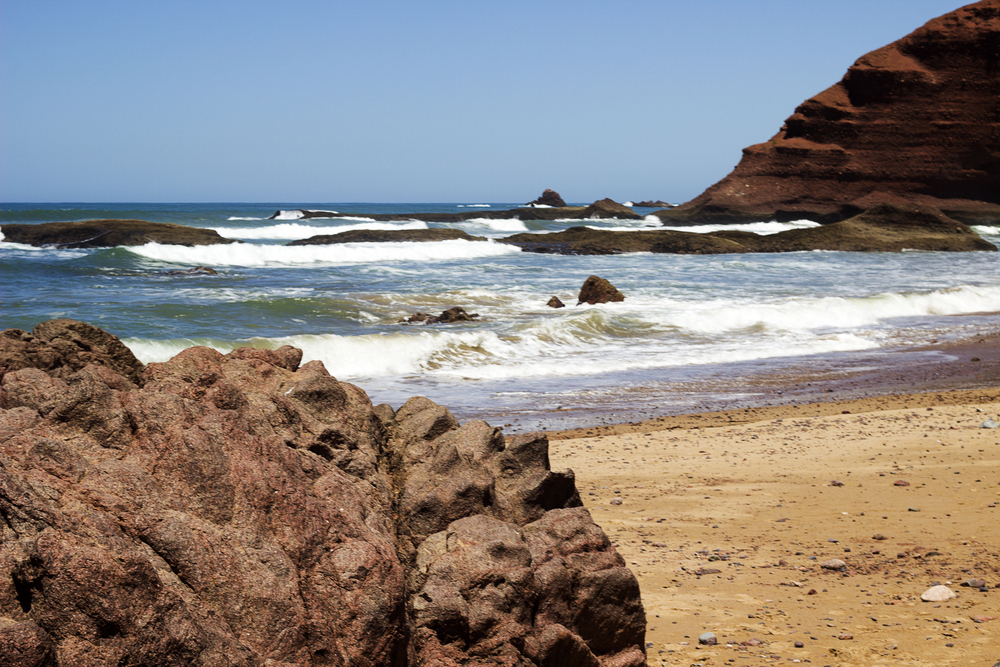
This Atlantic coast beach is famous for its enormous stone arches carved out by
centuries of wind and waves. Its red sandstone formations are simply spectacular.
The rich rust-red-colored cliffs create a dramatic contrast with the blue ocean and
sky, almost from Mars.
Local boatmen operate from these natural harbors, while photographers flock at the end of the day when the arches become luminescent like molten steel. Although one of the biggest arches fell in 2016, the remainder still attracts visitors from around the world.
Cathedral Cove, New Zealand
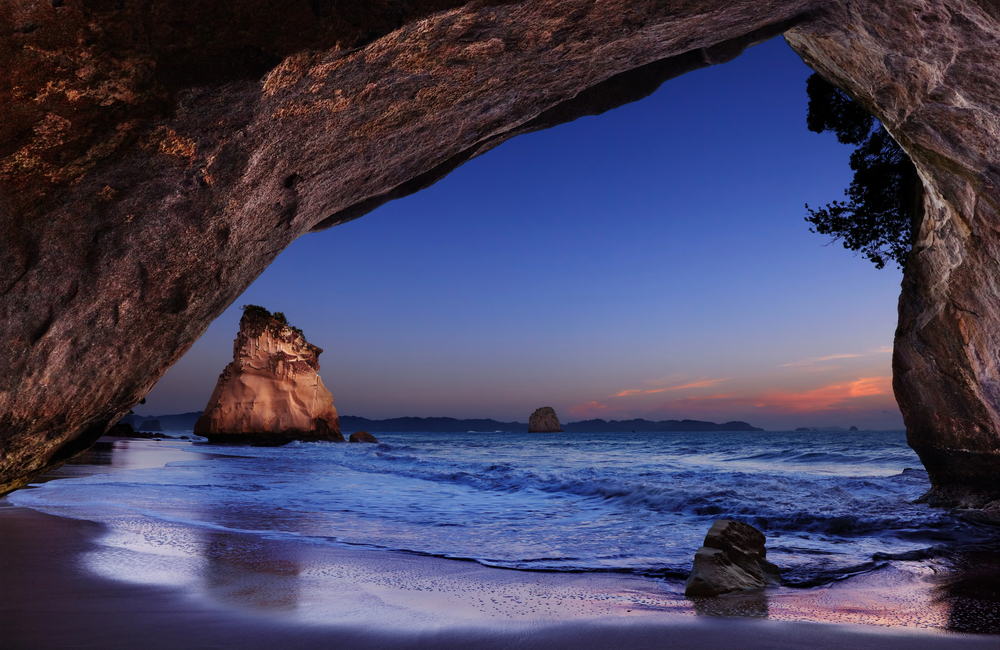
This is a striking natural arch on the Coromandel Peninsula, which forms a huge
cathedral-like passage between two secluded beaches. The white pumice and
limestone arch rises more than 80 feet into the air, framing perfect views of the
turquoise Pacific waters.
Accessible only by boat or a scenic 45-minute hiking trail, the cove’s remoteness helps preserve its natural beauty. Movie fans might recognize this location from ‘The Chronicles of Narnia: Prince Caspian.’
Benagil Cave, Portugal
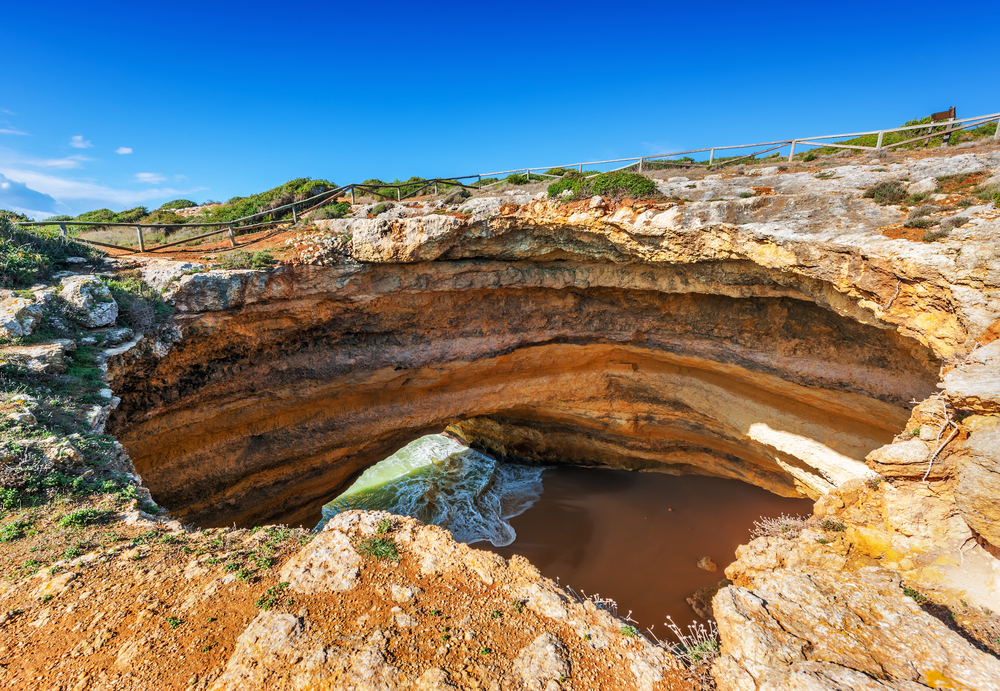
Sometimes referred to as the ‘Crown Jewel of the Algarve,’ this sea cave has an
oculus-like effect through the dome-shaped ceiling, which is truly amazing
throughout the day. The secluded beach-like area within appears almost gold when
sunlight filters in through the opening above.
With no access to land, it allows for kayak tours or small boat trips that can enter this astonishingly sculptured place. The acoustics here are perfect, hence it is almost spiritual in these quiet morning hours.
Like Travel Pug’s content? Follow us on MSN.
Durdle Door, England
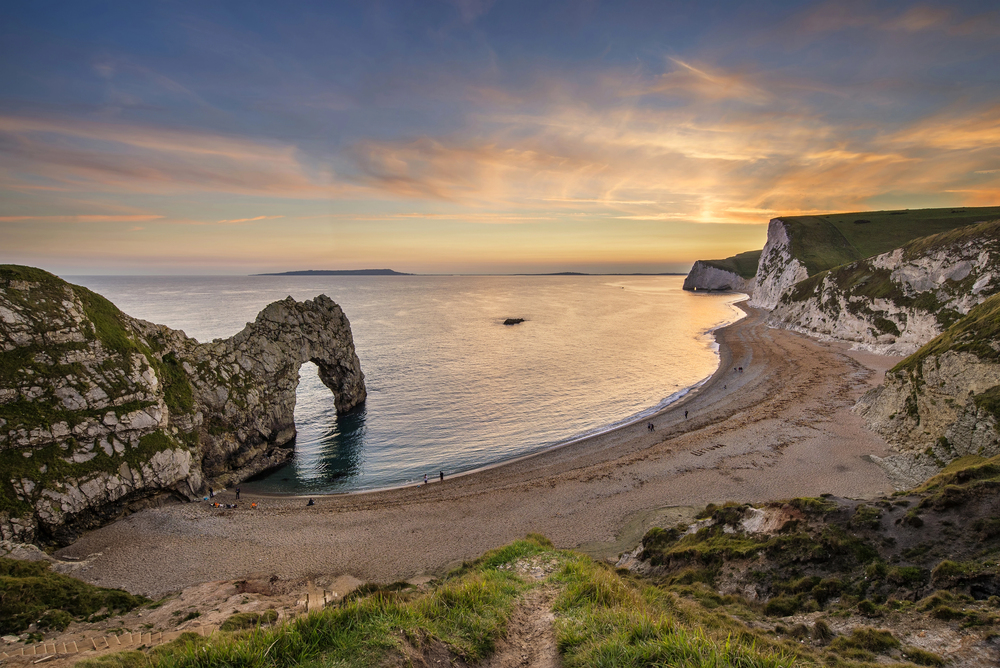
This natural limestone arch on Dorset’s Jurassic Coast is one of Britain’s most iconic
coastal formations. The word ‘durdle’ comes from an old English word meaning drill
or bore, referring to the hole carved by the relentless action of the waves.
It is a smooth pebble beach that provides perfect views of this magnificent structure, while the chalk cliffs surrounding it provide excellent hiking opportunities. Crystal-clear
waters around the arch attract brave swimmers during the summer months.
Parque Nacional Marino Los Arcos, Mexico
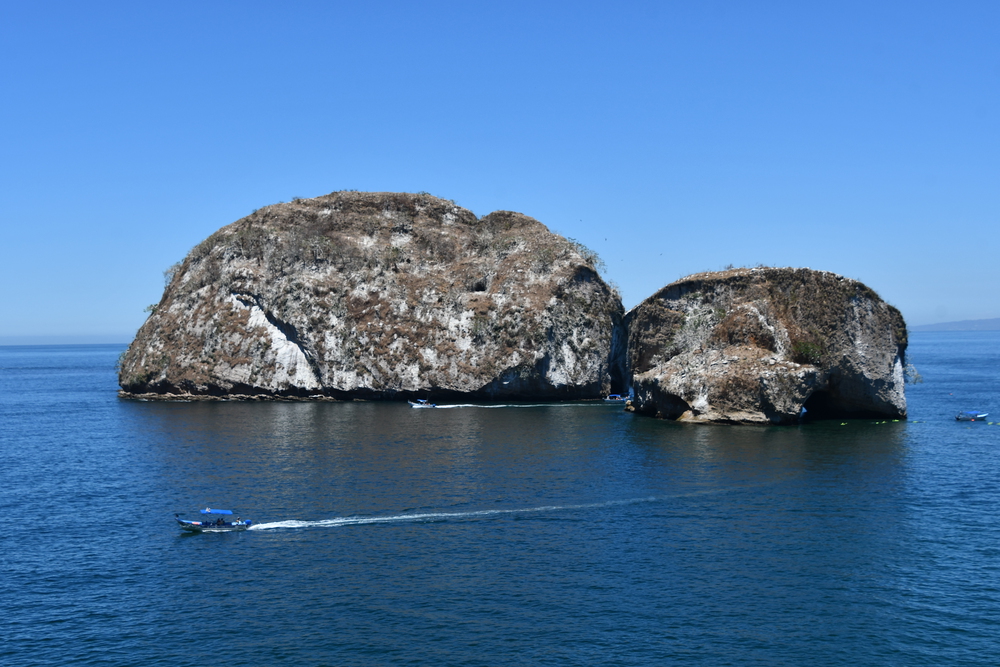
These are dramatically picturesque islands and arches situated near Puerto Vallarta,
chiselled by the Pacific into numerous caves, tunnels and rocky outcrops. The
formations provide ideal habitats for a rich variety of marine life, hence the popularity
among snorkelers and divers.
Local boats offer tours through the natural stone archways, while skilled kayakers can make their way to the smaller caves on their own. Tours available at sunset offer spectacular photo opportunities in which the rocks turn orange against the darkening sky.
The Sleeping Giant, Hawaii
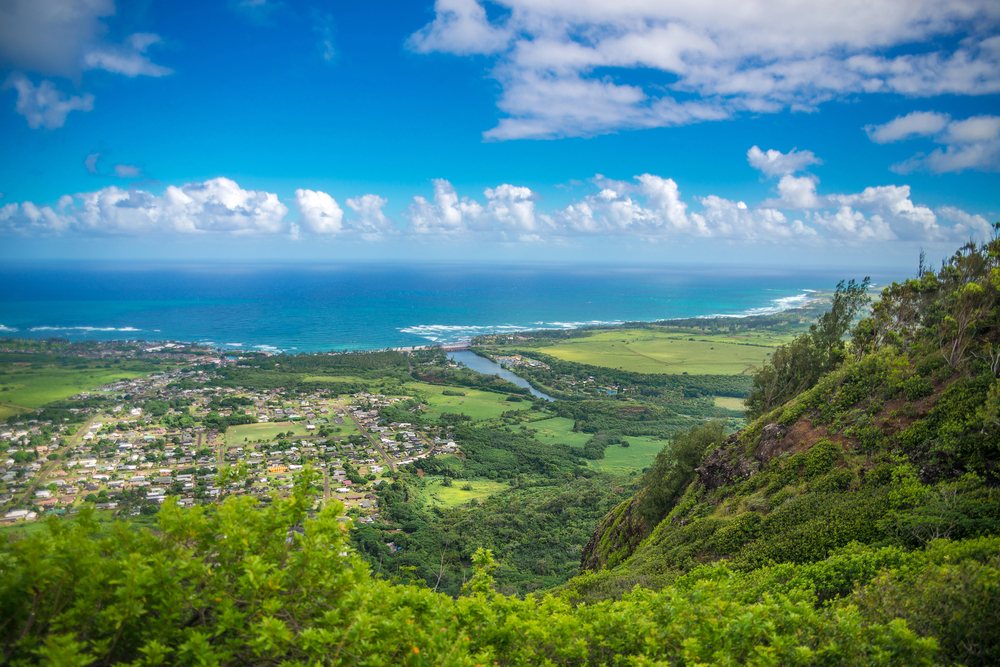
These ridges, lying on Kauai’s east coast, if looked at from beaches nearby, produce
the shape of a big recumbent giant. A little more than two miles is how long it
stretches, wherein one can spot a ‘head’ and some ‘feet.’
According to many traditional tales among the people of Hawaii, they differ on how it actually got there down by the sea coast. Its upper trails are accessible only by the moderate hiking trails.
Like Travel Pug’s content? Follow us on MSN.
Azure Window Site, Malta
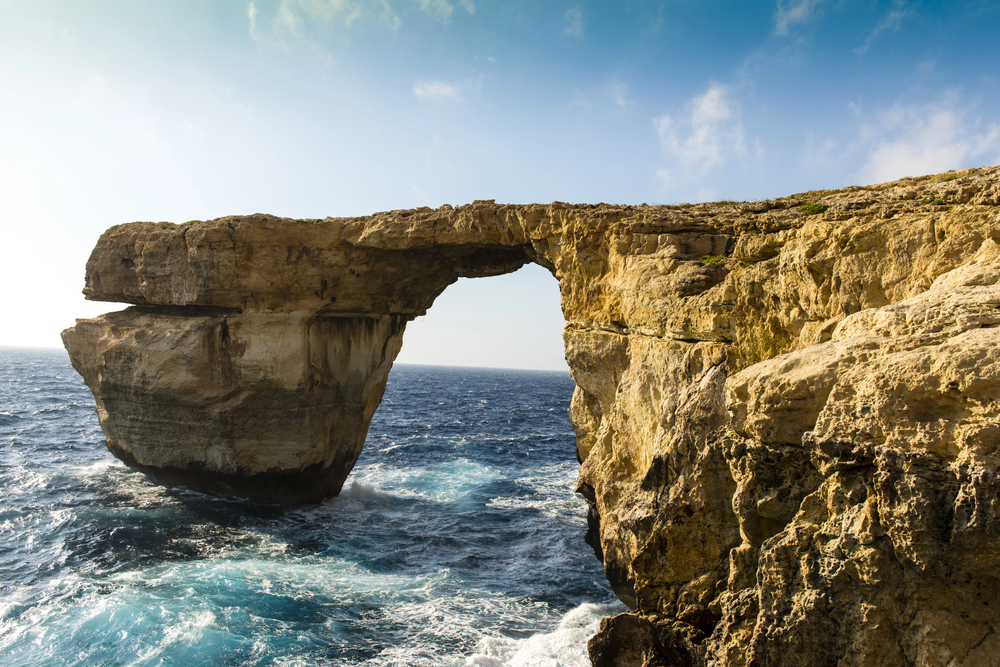
Although the famous arch collapsed in 2017, the site remains a very interesting
example of the processes involved in coastal erosion, with the deep blue ‘inland sea’
and the surrounding cliffs still attracting visitors. It is now a site where one can
observe how such formations change with time.
Local diving operators organize expeditions to view the collapsed structure beneath the waves, where new homes for marine life have formed amongst the boulders that have fallen. Dramatic cliffs and crystal-clear waters continue to impress visitors.
Etretat Cliffs, France
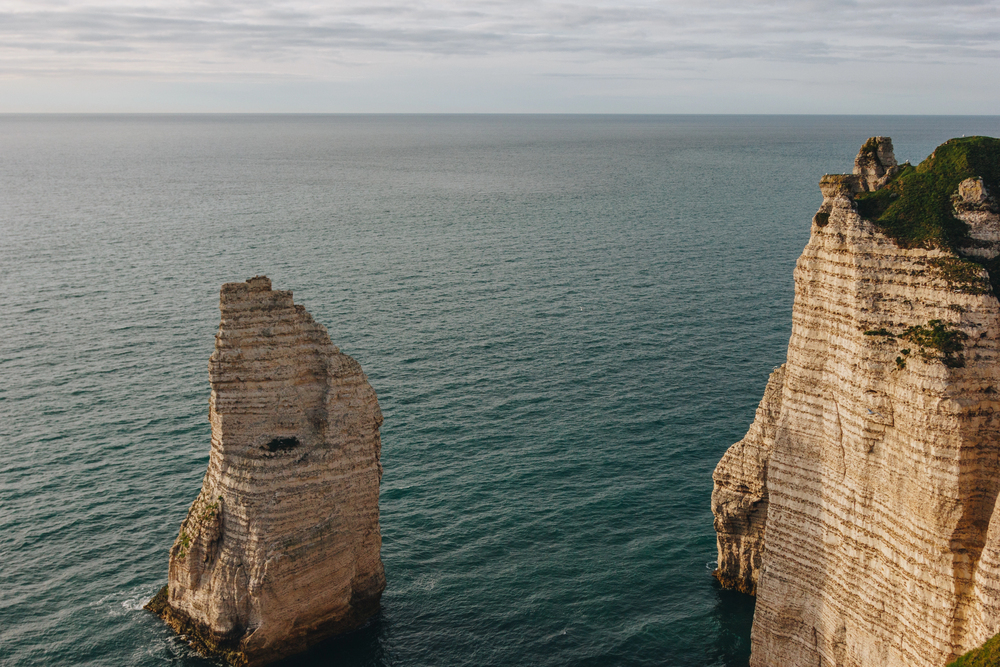
These are towering cliffs of chalk along Normandy, featuring three natural arches
and one pointed rock known as ‘The Needle.’ The white cliffs, immortalized by
Impressionist painters like Monet, reflect in the crystal clear waters below.
Walking trails lined along the clifftops offer spectacular views of these formations, while the pebble beach offers perfect vantage points for photographers. The town’s charming
architecture complements these natural wonders perfectly.
Cannon Beach, Oregon, USA
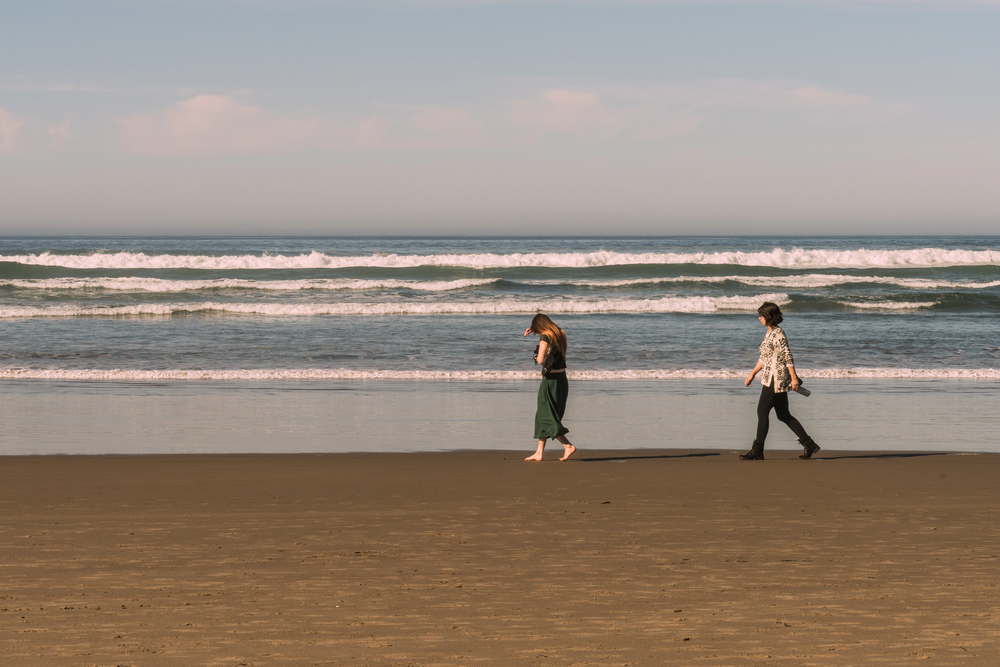
Dominated by Haystack Rock – a 235-foot sea stack rising out of the surf – this
Pacific Northwest beach contains a host of smaller rock formations created by
ancient lava flows. Monolithic Haystack is home to seabirds, including a colony of
colorful tufted puffins that nest from spring to fall.
Tide pools beneath the rock formations are revealed at low tide; colorful starfish and sea anemones are but one of many species seen here. The misty coastline creates ethereal scenes, especially during sunrise and sunset.
Like Travel Pug’s content? Follow us on MSN.
Cathedral Beach, Spain
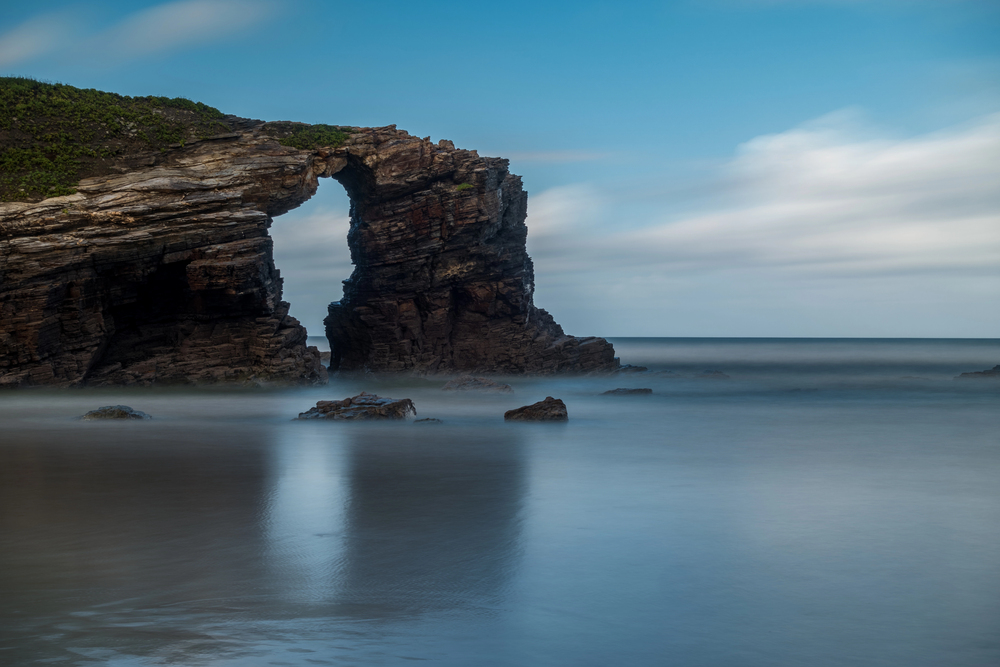
This fantastic coastline is full of stone arches and caves, just like the flying
buttresses of Gothic cathedrals, and is situated in Praia das Catedrais, Galicia. It can
be visited only at low tide when the hidden beach accesses a maze of passages
between tall rock formations.
The reddish stone creates dramatic contrasts with the blue waters of the Atlantic and white sand. Guided tours help visitors time their exploration around the tides while explaining the geological processes that shaped these formations.
Wharariki Beach, New Zealand
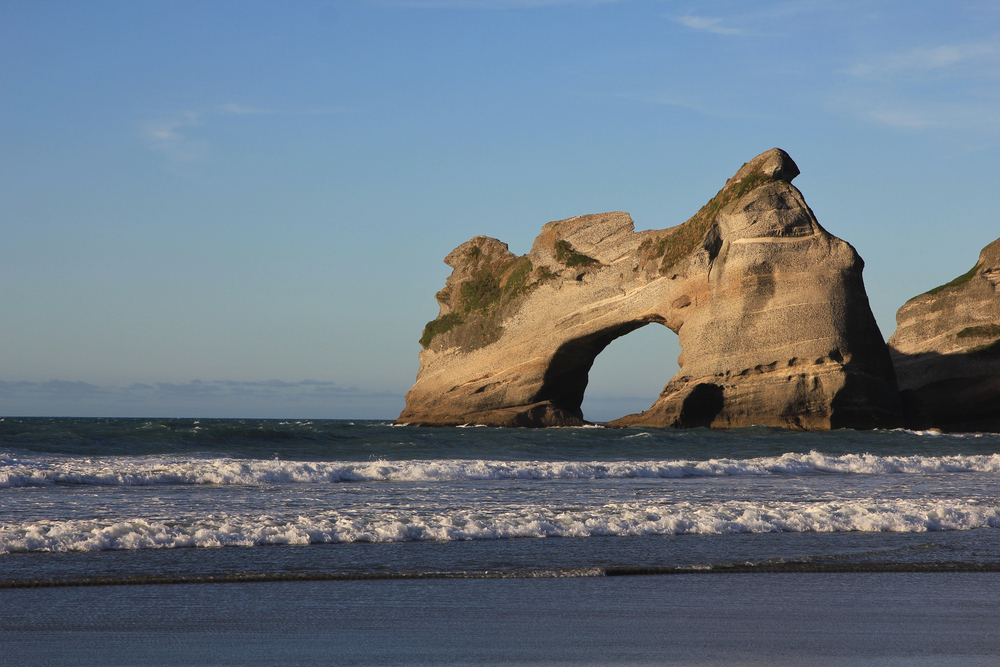
This isolated beach, on the northernmost tip of South Island, consists of huge rock
islands, caves, and natural arches carved by the Tasman Sea. The most
photographed structure, the Archway Islands, offers the perfect framing of the
sunset.
Resident fur seals often bake on the rocks, while strong winds continually create different patterns in the white sand dunes. It takes a 20-minute walk through farmland to get to the beach – a factor that helps keep crowds away from this wild stretch of coastline.
Virgin Gorda Baths, British Virgin Islands
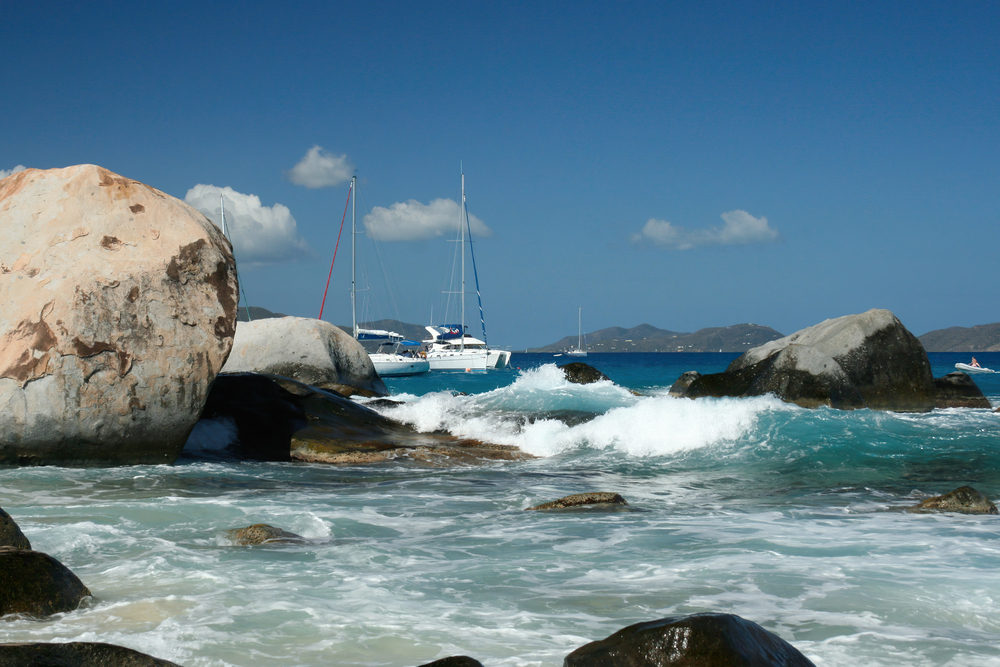
Large boulders of granites scattered down the beach form a maze of grottoes,
tunnels, and pools filled with crystal-clear Caribbean water. These geological
formations, some as large as 40 feet in diameter, resulted from ancient volcanic
activity.
A series of ladders and ropes help guide one through a labyrinth of rocks to find concealed beaches and perfect snorkeling spots. The contrast between the smooth, rounded boulders and turquoise water creates stunning photo opportunities.
Like Travel Pug’s content? Follow us on MSN.
Pigeon Island Arch, Saint Lucia
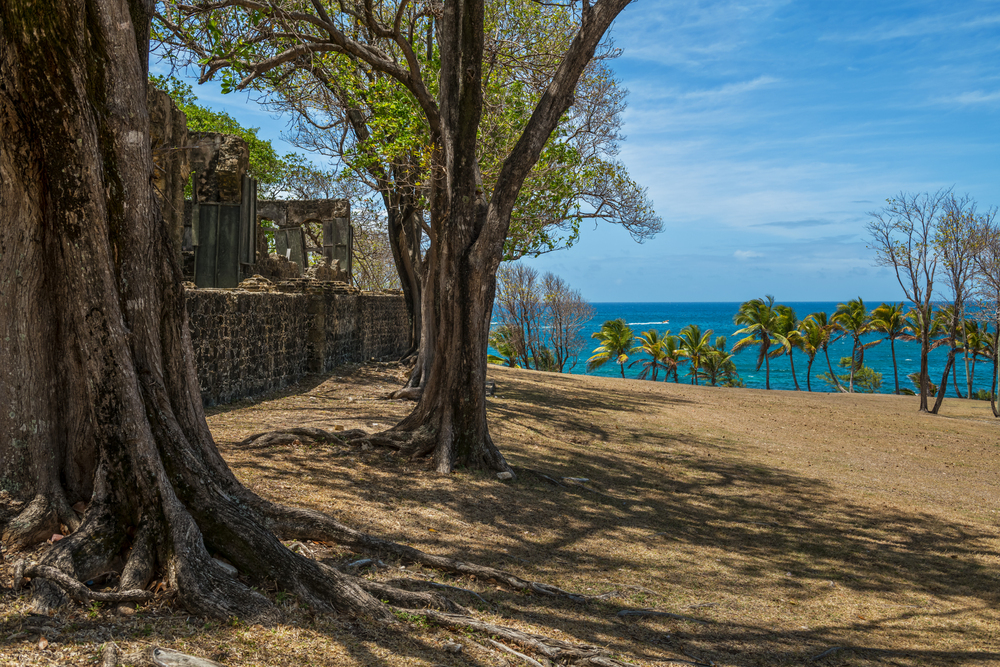
This natural stone archway, carved from volcanic rock by centuries of Atlantic waves,
provides a dramatic gateway between two pristine beaches. The formation stands
nearly 100 feet tall and spans 80 feet across, making it one of the Caribbean’s
largest natural arches.
Local boats offer tours around the formation, while experienced swimmers can snorkel through the arch during calm conditions. The surrounding cliffs host a plethora of tropical seabirds, adding to the wild beauty and photographic appeal of the location.
Where Time Shapes Stone

These spectacular coastal formations remind us that nature is a very patient artist,
and wind, waves, and time all work together to create landscapes that inspire
wonder and imagination. Some of these places are in active erosion and will
continue, over time, to change their forms, but as they stand today, they provide
unique windows into the geological processes at work on our planet for millennia.
More from Travel Pug

- 15 Dangerous European Cities to Avoid
- 15 Caribbean Islands Where Tourists Keep Getting Scammed
- The 20 Most Fascinating Abandoned Places: A Journey Through Time and Forgotten Spaces
- 15 Hidden Places in the Smithsonian Museums Locals Love: A Guide to Lesser-Known Treasures
- 16 Hidden Florida Beach Towns That Aren’t Overrun with Tourists
Like Travel Pug’s content? Follow us on MSN.
